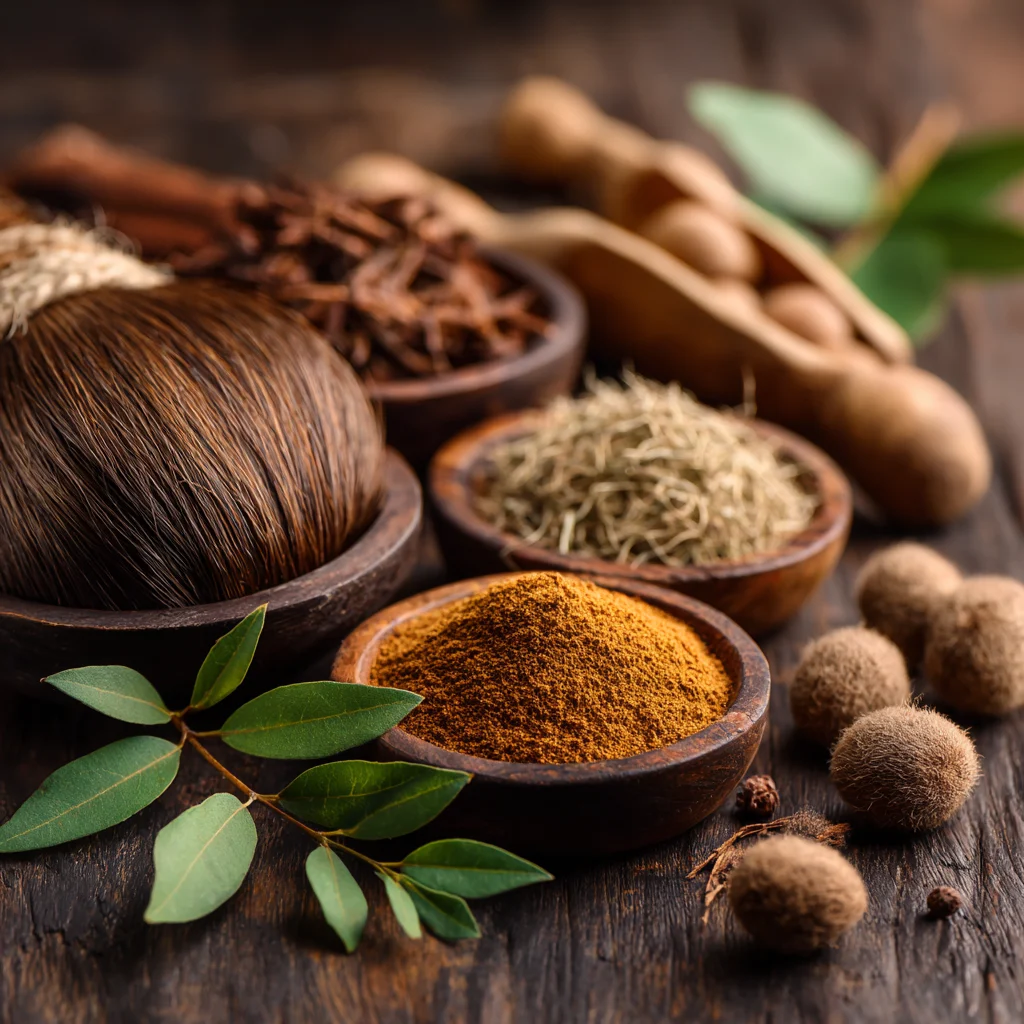7 Ancient Herbs for Hair Growth Backed by Modern Science
For centuries, cultures around the world have turned to nature for solutions to hair loss and thinning. Today, modern science is catching up, validating what our ancestors knew all along—certain herbs have remarkable hair-growing properties.
In this evidence-based guide, we’ll explore 7 powerful herbs that not only prevent hair loss but can also stimulate new growth, all supported by clinical studies and dermatologist recommendations.
1. Rosemary: The Science-Backed Growth Stimulant
How It Works:
-
Increases circulation to hair follicles (study in Skinmed Journal)
-
Blocks DHT, a hormone linked to hair loss (Phytotherapy Research)
-
As effective as minoxidil (Rogaine) for regrowth (Comparative Study, 2015)
How to Use:
-
Rosemary oil massage (mix 5 drops with 1 tbsp carrier oil)
-
Herbal rinse (steep fresh rosemary in hot water, cool, and pour over hair)
2. Fenugreek: The Protein Powerhouse
Why It Works:
-
Rich in proteins that rebuild hair structure
-
Contains lecithin to strengthen strands (Journal of Cosmetic Dermatology)
-
Hormone-balancing properties for postpartum hair loss
DIY Treatment:
-
Soak seeds overnight, blend into a paste, apply as a 30-minute mask
3. Amla (Indian Gooseberry): Vitamin C Superstar
Proven Benefits:
-
Boosts collagen production for stronger hair
-
Prevents premature graying (Ayurvedic studies)
-
68% thicker hair in 3 months (International Journal of Trichology)
Best Form:
-
Amla oil (pre-steeped) or powder mixed with yogurt
4. Hibiscus: Nature’s Follicle Activator
The Science:
-
Packed with amino acids that prevent breakage
-
Flavonoids increase hair density (Ethnobotanical studies)
-
Conditions scalp to reduce shedding
Quick Recipe:
-
Hibiscus petal paste + coconut oil = glossy hair treatment
5. Saw Palmetto: The DHT Blocker
Clinical Proof:
-
Reduces hair loss by 60% in androgenetic alopecia (Journal of Alternative Medicine)
-
Works similarly to finasteride (without side effects)
How to Take:
-
Supplement form (160mg twice daily)
-
Added to shampoo (look for serums with extract)
6. Ginseng: The Growth Cycle Regulator
Research Shows:
-
Extends hair’s growth phase (Journal of Medicinal Food)
-
Stimulates dormant follicles via ginsenosides
Application Tips:
-
Korean red ginseng extract in hair tonics
-
Powder in masks (mix with aloe vera)
7. Peppermint: The Circulation Booster
Study Results:
-
4% solution grew hair faster than minoxidil in mice (Toxicological Research, 2014)
-
Cooling effect reduces inflammation
Pro Tip:
-
Add 2 drops peppermint oil to your shampoo
Key Takeaways: How to Use These Herbs for Maximum Results
-
Consistency is key – Most herbs take 8-12 weeks to show visible changes
-
Combine internal + external use (e.g., drink rosemary tea while using the oil)
-
Patch test first – Some herbs (like peppermint) can irritate sensitive scalps
Dermatologist Insight:
“Herbs work best when paired with a healthy scalp environment. Gently exfoliate monthly to remove buildup blocking follicles.” – Dr. Sarah Jensen, Board-Certified Dermatologist
Frequently Asked Questions
Q: Can I mix multiple herbs together?
A: Yes! Try hibiscus + amla masks or rosemary + peppermint oil blends.
Q: How long until I see results?
A: Most users notice less shedding in 4 weeks, new baby hairs by week 8-10.
Q: Are these safe for color-treated hair?
A: Generally yes, but do a strand test—hibiscus can temporarily tint light hair.
Final Thoughts
While no herb is a “miracle cure” for baldness, these 7 scientifically validated options can significantly improve hair density, strength, and growth speed without harsh chemicals.
Ready to try? Start with 1-2 herbs matching your specific hair concern (e.g., rosemary for thinning, fenugreek for breakage). Document your progress with monthly photos!
